growing figs
Site Selection
Though figs (Ficus carica) are of Mediterranean origin, they thrive and fruit well in the Pacific Northwest. They produce small embryonic fruit each year in late summer that overwinters and ripens the following summer (called the Breba crop). They are self-fertile.
Figs will do best if planted in a warm site. Though they can be grown in the open, planting them against a south or west wall can increase ripening success in cooler summers. They prefer a well-drained, sandy soil. Sandy soil and raised beds warm earlier in the summer, increasing the growing season. Figs are somewhat drought tolerant. Figs can also be grown in large containers, which can be over wintered in a garage, shed, or greenhouse.
The first few years in the ground, protect the trunk of the fig by wrapping pipe insulation around it in the winter, after the leaves drop. Once the fig is well established, it can re-sprout from its roots if severely damaged by an especially hard winter. Container grown figs should be moved into a protected location for the winter, such as an unheated garden shed or garage. If left outside, the pot should be wrapped with insulation.
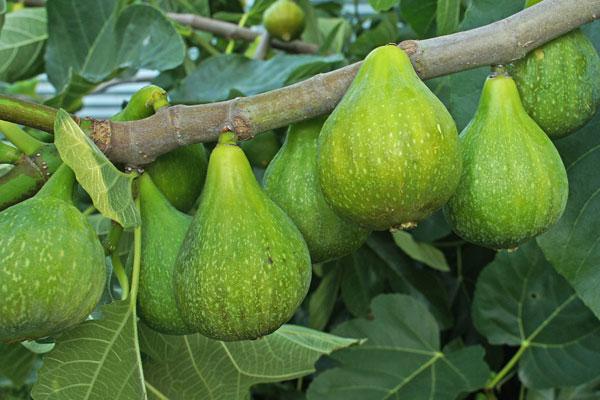
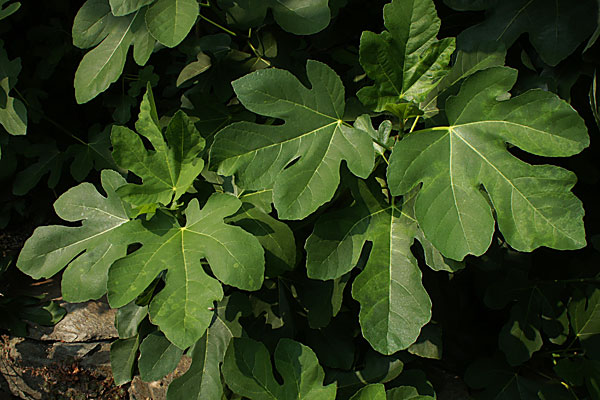
Pruning and Training
Figs can be grown as a single trunk tree, or as a multi–stemmed bush. They can be espaliered into a fan shape. We find that the most productive method of training is to treat them as a multi–stemmed bush. Pruning is done in two phases.
In early spring, before the tree breaks dormancy, remove any winter damaged wood, thin out weak shoots, and, on older trees, remove older, non-productive wood to the ground (before and after images, left column). The goal of this pruning is to keep the fig open to light and air circulation, and to stimulate new productive wood.
The second pruning is done in mid-summer and consists of pinching the new growing tips once they have extended 4-6 leaves. New side shoots will grow from these leaf axils, which will then produce embryonic figs in their leaf axils that will remain small enough to over winter and ripen the following summer (axils and embryonic figs images, right column). Without this summer pinching, the tree will often set fruit too early, and the fruit will grow too large to overwinter successfully. In late fall, after a hard freeze, remove any unripe figs that are larger than a marble; these will not overwinter.
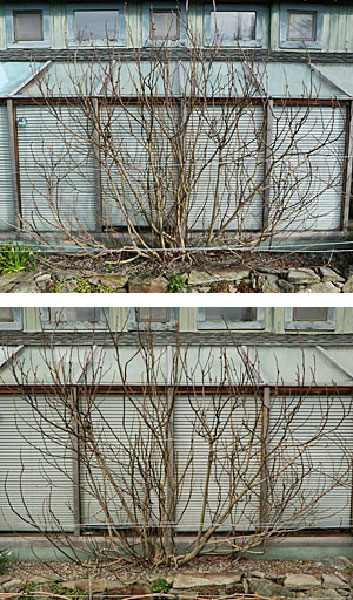
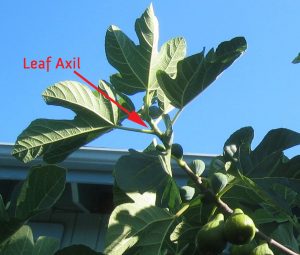
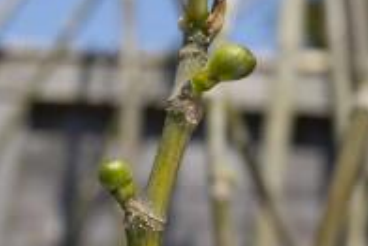
Harvest
Figs usually ripen over a several week period in August in the Pacific Northwest. They are ripe when the fruit droops on its stem and becomes quite soft. If we have rain while they are ripening, the base of the fig will sometimes split and exude a sugary juice. This is very attractive to wasps, so keep the ripe figs picked! You can eat the figs fresh (they will store a day or two in the refrigerator), dry them, freeze them, or make fig jam. Try halving fresh figs and threading them on skewer for the grill- they are great as a side dish or in salads.

Fig Chutney
by David Lebovitz
Feel free to play around with the spices in this chutney. You can use all raisins, or swap out some dried cranberries, diced apricots, or other dried fruits. Makes two jars (2 cups, 500g).
Ingredients:
- 1 tablespoon vegetable oil
- 1 large red onion, peeled and finely diced
- 1/2 inch (2cm) piece of fresh ginger, peeled and minced
- 2/3 cup (120g) packed light or dark brown sugar
- 1/2 cup (125ml) apple cider vinegar
- juice and zest of one lemon
- 3/4 cup (100g) raisins and diced dried fruits (any mix)
- 1 1/2 teaspoons mustard seeds
- 1 small cinnamon stick
- 1/4 teaspoon ground allspice
- 1/4 teaspoon salt
- 1/8 teaspoon ground cloves
- pinch red pepper powder
- 1 pound (450g) fresh figs, stemmed and diced
In a wide saucepan, heat the vegetable oil over medium heat. Add the onions and cook until translucent, which will take about 5-6 minutes, stirring occasionally.
Add the remaining ingredients, except for the figs. Let cook at a low simmer for 20 minutes, then add the figs, cover the pot, and cook for 5 to 10 minutes, until the figs are tender and cooked through.
Remove the lid and cook 10 to 15 minutes over low heat, stirring, until the mixture thickens and becomes jam-like.
